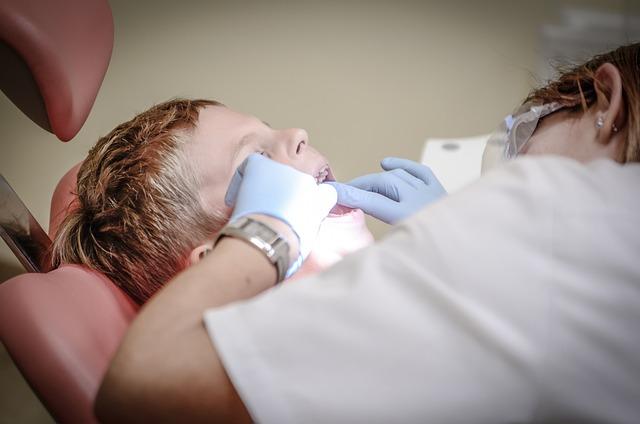How Long to Use Salt Water Rinse After Tooth Extraction: Guide
Are you scheduled for a tooth extraction and wondering how long you should continue using a salt water rinse afterward? Look no further! In this comprehensive guide, we will provide you with all the information you need to ensure a smooth and speedy recovery. From the optimal duration of salt water rinse to the benefits it offers, we have got you covered. So, sit back, relax, and let us guide you through this essential post-extraction care.
1. Understanding the Importance of Salt Water Rinse After Tooth Extraction
Salt water rinse is an essential part of post-tooth extraction care. This simple but effective practice helps promote healing and prevent infection. Here are some key points to understand about the importance of salt water rinse after tooth extraction:
1. Reduces swelling and inflammation: Salt water rinse acts as a natural antiseptic that helps reduce swelling and inflammation in the gums. It cleanses the area, removing any debris or bacteria that may have accumulated after the extraction.
2. Promotes blood clot formation: Salt water rinse aids in the formation of blood clots, which are crucial for the healing process. Blood clots protect the extraction site, preventing further bleeding and providing a foundation for new tissue growth.
3. Prevents infection: The saline solution created by mixing salt and warm water creates an environment that is hostile to bacteria. Rinsing with salt water helps kill any remaining bacteria in the mouth, reducing the risk of infection at the extraction site.
To perform a salt water rinse, dissolve half a teaspoon of salt in eight ounces of warm water. Take a mouthful of the solution and swish it around gently for about 30 seconds before spitting it out. Repeat this process several times a day, particularly after meals, for optimal results. Remember to avoid vigorous rinsing or spitting to prevent dislodging the blood clot and interfering with the healing process.
By incorporating salt water rinse into your post-tooth extraction routine, you can help ensure a smoother and faster recovery. It is always advisable to consult your dentist for specific instructions and guidance tailored to your individual needs.

2. Step-by-Step Guide: How to Perform Salt Water Rinse for Optimal Healing
Performing a salt water rinse is a simple yet effective way to promote optimal healing for various oral issues. Whether you have a mouth sore, gum inflammation, or recently had a dental procedure, this step-by-step guide will help you perform a salt water rinse correctly:
- Step 1: Prepare the solution by mixing 1/2 teaspoon of salt with 8 ounces of warm water. Make sure the salt is completely dissolved before moving on to the next step.
- Step 2: Take a small sip of the salt water solution and swish it around your mouth for about 30 seconds. Be sure to reach all areas, including the front, back, and sides of your mouth.
- Step 3: Spit out the solution into the sink. Do not swallow it, as it may cause discomfort or nausea.
- Step 4: Repeat steps 2 and 3 until you have used up the entire 8-ounce solution. This usually takes around two to three minutes.
Performing a salt water rinse two to three times a day can help reduce inflammation, alleviate pain, and support the healing process. Remember, it is crucial to follow proper oral hygiene practices in addition to salt water rinses for optimal oral health.

3. The Ideal Duration: How Long Should You Use Salt Water Rinse After Tooth Extraction?
When it comes to the ideal duration for using a salt water rinse after a tooth extraction, there are a few factors to consider. While there is no set time frame that applies to everyone, following these guidelines can help promote proper healing and minimize the risk of complications:
- Frequency: Rinse your mouth with salt water solution after every meal and before bedtime for the first 24 to 48 hours following the extraction.
- Duration: Each rinse should last for about 30 seconds. Gently swish the solution around your mouth, ensuring it reaches the extraction site.
- Gradual reduction: After the initial 48 hours, you can gradually reduce the frequency of rinsing to three to four times a day for the next few days. Continue this routine until the extraction site has fully healed.
It’s important to note that everyone heals at a different pace, so it’s essential to listen to your body and consult your dentist for personalized advice. If you experience any unusual pain, swelling, or prolonged bleeding, contact your dentist immediately.

4. Achieving Faster Recovery: The Science Behind Salt Water Rinse
Salt water rinse is a proven and effective method for achieving faster recovery after oral surgeries or dental procedures. The science behind this technique lies in the properties of salt and water, which work together to promote healing and reduce discomfort. Here’s how it works:
1. Reduces inflammation: Salt water acts as a natural anti-inflammatory agent, helping to reduce swelling and pain in the affected area. The salt helps draw out excess fluid from the tissues, providing relief and speeding up the healing process.
2. Cleanses the wound: The salt in the rinse acts as a gentle disinfectant, killing bacteria and preventing infection. It also helps to remove debris or food particles that may be stuck in the wound, promoting a clean environment for healing.
3. Promotes blood circulation: When salt water is swished around the mouth, it stimulates blood flow to the area, delivering essential nutrients and oxygen to the tissues. This increased circulation helps to accelerate the healing process and reduces the risk of complications.
To prepare a salt water rinse, simply dissolve half a teaspoon of salt in a cup of warm water. Swish the solution around your mouth for about 30 seconds, making sure to reach all areas of the affected site. Spit out the rinse and repeat several times a day, especially after meals or whenever you feel discomfort. Remember to never swallow the salt water, as it can cause dehydration.
Incorporating a salt water rinse into your post-operative care routine can help you achieve a faster and smoother recovery. Consult with your dentist or oral surgeon for specific instructions and recommendations based on your individual needs.
5. Expert Recommendations: When and How Often to Use Salt Water Rinse
Salt water rinse is a highly effective remedy for various oral health issues and is recommended by experts. Here are their recommendations on when and how often to use this simple yet powerful solution:
1. Post-dental procedures: After dental surgeries or extractions, experts suggest rinsing your mouth with salt water to promote healing and prevent infection. This can be done 24 hours after the procedure, and repeated 2-3 times a day for a week or until your dentist advises otherwise.
2. Soothing mouth sores: Salt water rinse can provide relief for painful mouth sores like canker sores or cold sores. Rinse your mouth with warm salt water for 30 seconds, 2-3 times a day until the sores heal. Remember to spit out the solution after rinsing and avoid swallowing it.
3. Daily hygiene routine: Including salt water rinse as part of your daily oral hygiene routine can help maintain good oral health. It can effectively combat bad breath, reduce gum inflammation, and prevent plaque buildup. Simply dissolve half a teaspoon of salt in a glass of warm water, swish it around your mouth for 30 seconds, and spit it out. This can be done once or twice a day, preferably after brushing and flossing.
Remember, salt water rinse should never replace regular brushing and flossing, but rather complement them. If you have any concerns or specific oral health conditions, it’s always best to consult your dentist for personalized recommendations.
6. Ensuring Proper Technique: Tips for Effective Salt Water Rinse After Tooth Extraction
When it comes to ensuring proper technique for a salt water rinse after tooth extraction, there are a few key tips to keep in mind. These tips will help you effectively clean and promote healing in the extraction site, minimizing the risk of infection and discomfort. Follow these guidelines for a successful salt water rinse:
- Use the right salt-to-water ratio: It’s important to mix the salt water solution correctly. Dissolve half a teaspoon of salt in 8 ounces of warm water. Make sure the salt is completely dissolved before using the mixture.
- Gently swish, don’t vigorously rinse: After tooth extraction, you want to avoid dislodging the blood clot that forms in the socket. To prevent this, swish the salt water gently in your mouth without forcefully spitting or rinsing.
- Rinse at the right frequency: Aim to rinse with salt water after meals and before bedtime. This will help keep the extraction site clean and free from food particles, reducing the risk of infection.
- Do not swallow the salt water: Although the salt water rinse is generally safe, avoid swallowing it. Spit out the solution gently after swishing.
- Continue salt water rinses as directed: Follow your dentist’s instructions on how long to continue with salt water rinses. Typically, it’s recommended to continue rinsing for several days after the extraction to aid in healing.
By following these tips, you can ensure that your salt water rinse after tooth extraction is done effectively, promoting proper healing and reducing the risk of complications. Remember to consult your dentist if you have any concerns or questions about the process.
7. Overcoming Potential Challenges: Common Concerns About Salt Water Rinse
When it comes to using a salt water rinse, there might be some concerns or challenges that can arise. However, it’s important to note that many of these concerns can be easily overcome with the right knowledge and approach. Here are a few common concerns about salt water rinse and how to overcome them:
- Taste: Some individuals may find the taste of salt water rinse to be unpleasant or overpowering. If this is a concern for you, consider adding a small amount of baking soda to the rinse solution. This can help neutralize the taste and make it more tolerable.
- Sensitivity: If you have sensitive teeth or gums, you may worry that salt water rinse could cause discomfort or irritation. To minimize sensitivity, make sure to use warm water instead of cold water when preparing the rinse. Additionally, be gentle when swishing the solution around your mouth to avoid any unnecessary discomfort.
- Consistency: Maintaining a consistent salt water rinse routine might be a challenge for some individuals. To overcome this, consider setting reminders or incorporating it into your daily oral hygiene routine. Making it a habit can help ensure its regularity and effectiveness.
Remember, salt water rinse can be a valuable tool for maintaining oral health and alleviating certain oral issues. By addressing these common concerns and finding solutions that work for you, you can confidently incorporate salt water rinse into your oral care routine.
8. Signs of Progress: How to Tell if Salt Water Rinse is Benefiting Your Healing Process
When it comes to healing wounds or oral injuries, using a salt water rinse has been proven to be highly effective. But how do you know if it is actually benefiting your healing process? Look out for these signs of progress:
- Reduced swelling: One of the first signs that salt water rinses are working is a decrease in swelling around the affected area. The saline solution helps to draw out excess fluid and reduce inflammation, leading to a noticeable reduction in swelling.
- Improved pain relief: As the healing progresses, you should begin to experience a decrease in pain and discomfort. Salt water rinses not only help to cleanse the wound but also have a soothing effect, providing relief from any lingering pain.
- Decreased redness: Another positive sign is a reduction in redness around the wound. The antibacterial properties of salt water help to combat infection, promoting faster healing and diminishing the redness associated with inflammation.
- Accelerated scab formation: A clear indication that the salt water rinse is benefiting your healing process is the formation of a scab. The saline solution aids in drying out the wound, allowing the scab to develop and protect the underlying tissues.
- Improved overall healing: Over time, you will notice an overall improvement in the healing process. The salt water rinse promotes the growth of new tissue and stimulates blood flow, leading to a faster and more efficient healing process.
If you observe these signs of progress, it is a good indication that the salt water rinse is indeed benefiting your healing process. However, if you experience any worsening symptoms or have concerns, it is always recommended to consult with a healthcare professional for further guidance.
9. Beyond the Extraction: Other Benefits of Salt Water Rinse for Oral Health
Using a salt water rinse for oral health goes beyond just its extraction benefits. It offers a range of additional advantages that can improve the overall well-being of your mouth. Here are some other benefits to consider:
- Reduces inflammation: Salt water has anti-inflammatory properties that can help alleviate gum inflammation and reduce swelling. It can provide relief from gum diseases such as gingivitis and periodontitis.
- Heals mouth sores: The saline solution can accelerate the healing process of mouth sores, such as canker sores. It creates an environment that is unfavorable for bacteria growth, aiding in the healing process.
- Neutralizes pH balance: Salt water rinse helps maintain a balanced pH level in your mouth. This can prevent the growth of harmful bacteria and maintain a healthy oral environment.
- Alleviates bad breath: Salt water rinse can temporarily alleviate bad breath by neutralizing odor-causing bacteria. It can also help cleanse the mouth of food particles and debris that contribute to bad breath.
- Safe and natural: Salt water rinse is a safe and natural alternative to chemical-based mouthwashes. It does not contain any artificial ingredients or alcohol, making it a gentle option for those with sensitive mouths.
By incorporating a salt water rinse into your oral hygiene routine, you can experience these additional benefits alongside its extraction properties. It’s an easy and cost-effective way to promote a healthier mouth.
10. Final Takeaway: The Lasting Impact of Salt Water Rinse on Your Dental Wellness
The use of a salt water rinse can have a significant and lasting impact on your dental wellness. Here are some key takeaways to consider:
- Reduced inflammation: Salt water rinses have natural anti-inflammatory properties that can help reduce inflammation in the gums and mouth. This can be particularly beneficial for individuals dealing with gum disease or mouth sores.
- Promotes healing: The salt in the rinse can help promote the healing process by drawing out any excess fluid and toxins from the affected area. This can aid in the recovery of wounds, ulcers, and other oral injuries.
- Prevents bacterial growth: Salt water rinses create an environment in which bacteria struggle to survive. By regularly incorporating this simple practice into your oral hygiene routine, you can help prevent the growth of harmful bacteria and keep your mouth healthy.
Overall, incorporating a salt water rinse into your dental care routine can have a positive and lasting impact on your oral health. It is an affordable and natural solution that can help reduce inflammation, promote healing, and prevent bacterial growth. Consult with your dentist to determine the best frequency and duration for incorporating this rinse into your oral hygiene routine.
Frequently Asked Questions
Q: How long should I use a salt water rinse after tooth extraction?
A: It is recommended to use a salt water rinse for at least the first 24 hours after a tooth extraction.
Future Outlook
In conclusion, the key takeaways from this guide on how long to use a salt water rinse after tooth extraction are as follows:
1. Salt water rinses are a safe and effective way to promote healing after tooth extraction.
2. It is recommended to use a salt water rinse for at least the first 24 hours after the procedure.
3. After the first day, continue rinsing with salt water for an additional 5-7 days, or as advised by your dentist.
4. Salt water rinses help to reduce swelling, prevent infection, and alleviate discomfort.
5. Remember to use the correct ratio of salt to water for the rinse – ½ to ¾ teaspoon of salt per 8 ounces of warm water.
6. Be gentle when rinsing, allowing the solution to gently flow over the extraction site without forcefully swishing it around.
7. If you experience excessive bleeding, severe pain, or any other concerning symptoms, contact your dentist immediately.
By following these guidelines, you can ensure a smooth and comfortable recovery after your tooth extraction. Remember to consult your dentist for personalized advice and to address any specific concerns you may have.






